Search Results
Diagnosis
Diagnosing acute lymphoblastic leukemia (ALL) and your ALL subtype usually involves a series of tests. An accurate diagnosis of the subtype is important. The exact diagnosis helps the doctor
Diagnosis
An accurate diagnosis is one of the most important aspects of a person’s medical care. Obtaining a precise diagnosis will help the doctor to:
- Estimate how the disease will progress
- Determine the appropriate treatment
The results of blood tests that accompany periodic medical examinations may indicate the need for further evaluation for myeloma. These include an elevated protein level, anemia and abnormalities in kidney function or calcium levels.
T-Cell Prolymphocytic Leukemia (T-PLL)
T-cell prolymphocytic leukemia (T-PLL) is an extremely rare and typically aggressive malignancy (cancer) that is characterized by the out of control growth of mature T-cells (T-lymphocytes). T-cells are a type of white blood cell that protects the body from infections. T-PLL affects older adults with a median age at diagnosis of 61 years, and it is more common in men than in women.
Stem Cell Transplantation
For some high-risk patients who are in remission, the doctor may recommend stem cell transplantation during the consolidation phase of chemotherapy.
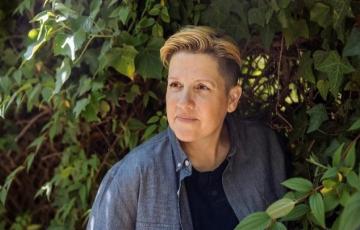
J.J.
The first time I remember hearing of The Leukemia & Lymphoma Society (LLS) was through Team In Training (TNT), specifically from a brochure I picked up at a bike shop that invited one to train for a 109-mile bike ride with TNT. It was 2007, and I thought it sounded like a blast. I convinced my girlfriend at the time, Stacey, to join me. We used the occasion to buy some fancy new bikes. With some fundraising and committed training dates, we would be able to say we had done a Century Bike Ride! Cool!
Are Clinical Trials Safe?
U.S. clinical trials are designed to give patients the safest, potentially most effective clinical therapies. Clinical trials are conducted once researchers have shown in the laboratory and in animal research that a particular study treatment has a good chance of offering better outcomes for people with a specific disease.
Patients enrolled in cancer clinical trials are never treated as “guinea pigs.” In fact, patients are given either
Kay and David LaFrance
As an 18-year breast cancer survivor, Kay was just starting to enjoy retirement in 2018 when she was diagnosed with mantle cell lymphoma. Even though she had fought cancer before, she was stricken with despair and disbelief and felt terrified of the road ahead of her. She had to travel to a different city to receive her specialized treatment, which was outside of her insurance network, so much of the costs came out of her own pocket. After a long, hard fight, she is now in remission, but lives with the everyday fear of her cancer coming back.
Ron
Ron was a private man. He didn’t seek the company of many. But the friends he had were close, and more than anything, he cherished his time the most with his loving wife and best friend, Paulette. The two of them shared a love for fishing and traveling. They traveled all across the western United States searching for the best fishing spots. They even had a place in Baja California where they spent most of their time fishing together. Ron was unapologetically himself, and he never once cared about what others thought of him.
Bone Marrow Tests
Your doctor uses a bone marrow test to examine the fluid and tissue in your marrow. The tests help determine whether cancer or another disease is affecting blood cells or marrow, as well as the extent of the disease. Some changes to blood cells can be detected in marrow samples before they can be seen in blood samples.
Side Effects
Cancer therapy for chronic myelomonocytic leukemia (CMML) can sometimes produce side effects. For most patients, treatment side effects are temporary and go away once therapy ends. For other patients, side effects can be more severe, sometimes requiring hospitalization. Some patients never have any side effects.
Before you undergo treatment, talk with your doctor about potential side effects. Drugs and other therapies can prevent or manage many side effects.
Roberto
In the fall of 2014, I was living my dream. I had just finished my freshman year at NYU, where I studying musical theater. I was living in the East Village, experiencing everything that New York has to offer. Even though I was a long way from my family in Miami, I absolutely loved it. However, I soon started to feel lethargic, coupled with a lymph node that was popping out of my neck and getting bigger. Something just wasn’t right. I was downing 9 Advil a day and started seeing doctors to try and figure out what was going on.
Non-Hodgkin Lymphoma
Non-Hodgkin Lymphoma (NHL)- Is a type of cancer that generally develops in the lymph nodes and lymphatic tissue found in organs such as the stomach, intestines or skin. In some cases, NHL involves bone marrow and blood.
- Isn't just one disease–it's actually a diverse group of blood cancers that all arise from lymphocytes (white blood cells that are part of the immune system).
- Lymphoma cells may develop in just one place or in many sites in the body.
- NHL has many different subtypes which are either indolent (slow-growing) or aggressive (fast-grow

Deborah
I am a 54-year-old mother of two, the owner of a small business, Park Hill Yoga and have been married for 22 years. Being diagnosed with Hodgkin lymphoma in December 2015 came as the biggest surprise of my life.
Diagnosis
An accurate diagnosis of the type of leukemia is important. The exact diagnosis helps the doctor to estimate how the disease will progress and determine the appropriate treatment
Diagnosing acute myeloid leukemia (AML) and your AML subtype usually involves a series of tests. Some of these tests may be repeated during and after therapy to measure the effects of treatment.

Elizabeth
I was diagnosed with multiple myeloma (MM) in 2016. I had a hip replacement, and a mass was found on my hip, so I was referred to a cancer doctor. But the strangest thing was, I had no symptoms, so I went to the doctor, and I went through all kinds of tests. The doctor told me, “You have MM,” and I am like what's that? She said it was a blood cancer. I asked what do I need to do about it, and she told me I needed a stem cell transplant. But that was after so many doctor visits and labs, at one point she would tell me I had it and the next visit that I didn't.
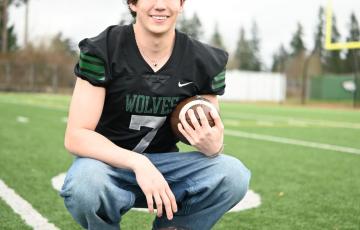
Will
My son Will was a vibrant, active, and typical junior in high school. He was living life to the fullest with a rigorous class schedule, working, training for his upcoming senior year of football, participating in many outdoor activities, and enjoying time with family and friends. On April 24, 2024, Will went in for wisdom teeth removal, and the oral surgeon had difficulty getting his bleeding under control. In a few short hours, including an ambulance ride to the hospital, Will would be diagnosed with acute promyelocytic leukemia (APL).
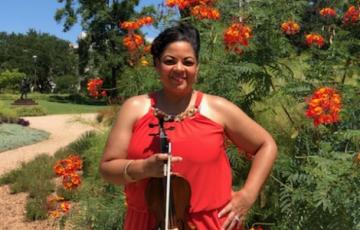
Christie
Today I am celebrating one year of being a CML survivor! With my initial diagnosis, I wondered what did a person with CML look like? I immediately began to consider my final days of life with making edits to a living will, securing a cancer life insurance policy and making sure my mother would be well taken care of.
A couple of weeks later, unbeknown to me that I would come face to face with a renowned preacher, who looked me in the eyes and told me with a strong abrasive voice, “Cancel Your Plans To Die!” While I didn’t expect this profound order, I did take heed.

Mateo
Our Journey On June 26 2013, at six years old, Mateo was diagnosed with acute lymphoblastic leukemia (ALL). Our world was completely upside down since that night. Our hearts shattered when we processed the words "your child has cancer ".

Robert
In 1990, I was diagnosed with M3 acute myeloid leukemia (AML) - now known as acute promyelocytic cancer (APL) - when I was a twenty-year-old college student studying abroad in Northern England.
I had ignored obvious symptoms for about a week leading up to my diagnosis, and it took another full week just to coordinate my departure from the UK to the University of Washington Medical Center in Seattle, not far from where I grew up. A host of complications followed during my first round of induction chemotherapy including massive amounts of internal bleeding.

Sal
Meet Sal. Chronic Myeloid Leukemia Survivor. Florida. Sal was diagnosed with chronic myeloid leukemia (CML) before his daughter Olivia celebrated her first birthday. After multiple courses of treatment proved unsuccessful, he underwent a bone marrow transplant in September 2011. Now, almost three years later, Olivia is almost 5 and her Daddy is celebrating his "three-year post-transplant birthday"! Sal is healthy and strong - and has the energy to play and laugh with her. Most beautiful of all, he can now dream of being at her side for all kinds of birthdays to come.
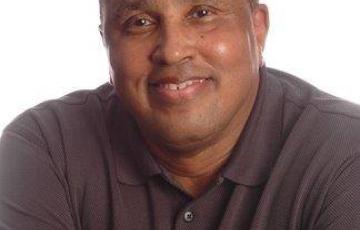
George
I am a 72-year-old retired Information Technology professional. I was diagnosed with chronic lymphocytic leukemia (CLL) in June 2002 and remain in active treatment today. Over the last 22 years, I have had more than 700 trips for doctor visits, treatments, lab test, emergency room, hospitalizations, and pharmacy. My biggest challenge over the years is managing the cost of premiums, medical treatment, drugs, travel, and medical appliances. I found multiple resources that stepped in to assist me with my financial challenges related to my CLL.
Tessa
Tessa surprised our family when she came rockin' an extra chromosome. She spent 11 days in the NICU and left with oxygen but seemed in good health otherwise. When Tessa turned 18 months old, she became very sick. She had multiple infections that wouldn't go away, became lethargic, and wasn't her cheerful self anymore. After a blood test, her pediatrician suspected leukemia. More tests confirmed Tessa had acute lymphoblastic leukemia (ALL). She went through chemotherapy for two and a half years and finished treatment in May 2020.
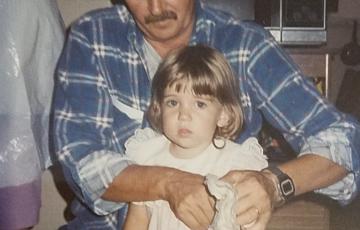
Sherri
I have donated to The Leukemia & Lymphoma Society (LLS) for many years. This year I wanted to do more in honor and loving memory of my dad, Frederick.

Charlie
At two and a half years old, Charlie was diagnosed with acute lymphoblastic leukemia (ALL).
Soon after being diagnosed, she underwent surgery to insert a port-a-cath so she could receive chemotherapy treatments and make route blood work easier on her. Chemotherapy treatments were extremely hard on her little body and she refused to walk. She had neuropathy from the treatments.